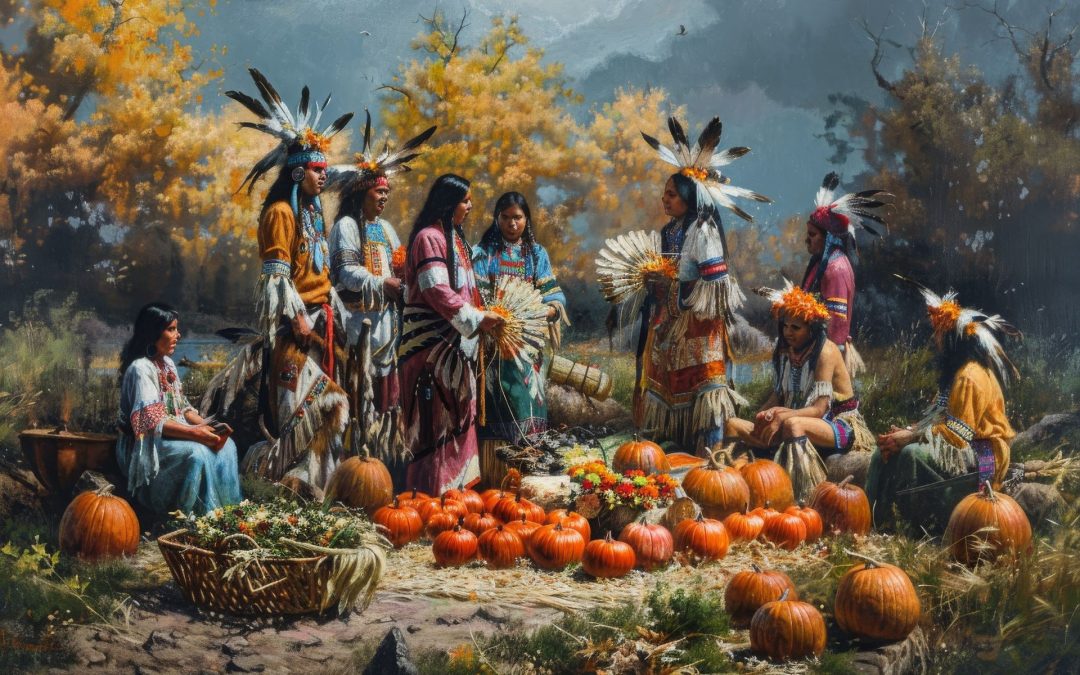Long before pumpkins became a Thanksgiving staple, a Halloween symbol, or the key ingredient in pie, they held deep cultural and practical significance for Indigenous people across North America. With origins dating back thousands of years, pumpkins are one of the oldest cultivated plants in the Americas, and they played a vital role in Indigenous diets, medicine, and traditions. Understanding the history of pumpkins among Indigenous people reveals a rich and enduring relationship between this native crop and the land it comes from.
Ancient Origins of the Pumpkin
The pumpkin is native to North America and belongs to the Cucurbitaceae family, which includes other squashes and gourds. Archaeological evidence shows that pumpkins and other squash were cultivated as early as 7,500 years ago in what is now Mexico. These early pumpkins were small and hard, unlike the large, sweet pumpkins we know today. Indigenous people worked with nature, selectively cultivating the pumpkins over generations, eventually resulting in the familiar varieties we see today.
The Three Sisters: Corn, Beans, and Squash
For many Indigenous cultures, pumpkins were part of the “Three Sisters,” a term describing the interplanting of corn, beans, and squash. This agricultural trio was not only practical but highly sustainable, as each crop supported the growth of the others.
- Corn provides a natural pole for beans to climb.
- Beans fix nitrogen in the soil, improving soil fertility.
- Squash covers the ground, protecting soil moisture and preventing weeds.
Together, the Three Sisters provided a balanced diet, with corn offering carbohydrates, beans providing protein, and squash supplying vitamins and minerals. Pumpkins specifically were a vital part of this trio, contributing dietary fiber, beta-carotene, and various essential nutrients. This planting method also fostered a deep respect for the environment, as it promoted biodiversity and reduced the need for external resources.
How Indigenous People Used Pumpkins
Indigenous people used pumpkins in various forms, making use of nearly every part of the plant. Pumpkins were incredibly versatile and served as food, medicine, and even as tools or containers.
Food and Nutrition
- Indigenous people roasted, boiled, and dried pumpkin flesh. Dried pumpkin could be stored for months, making it a crucial food source during the winter months.
- Pumpkin seeds were also dried or roasted and were a valuable source of protein and healthy fats.
- Pumpkin blossoms were eaten as a vegetable or used to flavor stews.
Medicinal Uses
- Certain Indigenous tribes used pumpkin seeds as a natural remedy for parasites, digestive issues, and kidney health.
- Pumpkin pulp and leaves were sometimes applied to wounds to aid in healing or to soothe skin irritations.
Other Uses
- Dried pumpkins were often hollowed out and used as containers for storage, especially for grains and seeds.
- Pumpkin shells were used as bowls or even utensils in some regions.
By using pumpkins in such a wide variety of ways, Indigenous people demonstrated their resourcefulness and respect for the plant, which could sustain them through different seasons and needs.
Spiritual and Cultural Significance
For many Indigenous tribes, pumpkins and other crops grown in harmony with the earth held spiritual significance. The planting, cultivating, and harvesting of pumpkins were part of seasonal cycles that connected people to the land and to each other. These practices fostered a sense of gratitude and reverence for the earth’s gifts, and many harvest celebrations honored pumpkins as part of this gratitude.
Different tribes had specific ceremonies and rituals tied to the harvest season, many of which featured pumpkins as symbols of abundance, sustenance, and survival. For Indigenous cultures, pumpkins weren’t just a food source but a representation of the earth’s generosity and a reminder of their responsibility to care for the land in return.
The Role of Pumpkins in Indigenous Traditions Today
While modernization has transformed agriculture and daily life, many Indigenous people still hold on to traditional methods of planting and harvesting pumpkins. The Three Sisters method, for instance, is celebrated and practiced in many Indigenous communities as both a cultural heritage and a sustainable agricultural technique.
Indigenous food sovereignty movements have also brought renewed focus to traditional crops like pumpkins, advocating for the revitalization of Indigenous foods, seeds, and farming methods. These movements emphasize the importance of maintaining the connection between food, culture, and health, reminding us of the wisdom Indigenous people have long held about sustainable living.
Honoring Indigenous Knowledge and the Legacy of Pumpkins
Today, pumpkins are a celebrated part of American culture, especially in the fall, when they appear on doorsteps, in pies, and as decorations. But behind this seasonal icon lies a deep and enduring legacy of Indigenous knowledge, cultivation, and respect for the land. Indigenous people not only domesticated the pumpkin but built a sustainable relationship with it and other native crops, teaching future generations about the importance of harmony with nature.
Thank you for taking time to recognize the Indigenous people who first cultivated this remarkable fruit, as well as their continued contributions to agriculture, food culture, and environmental stewardship. Through understanding the history of pumpkins among Indigenous people, we gain greater appreciation for the resilience, ingenuity, and reverence they have for the land and its harvest.
Learn more about the Indigenous Peoples of the United States and honor November as Native American Heritage Month.
Photo: AI Generated

